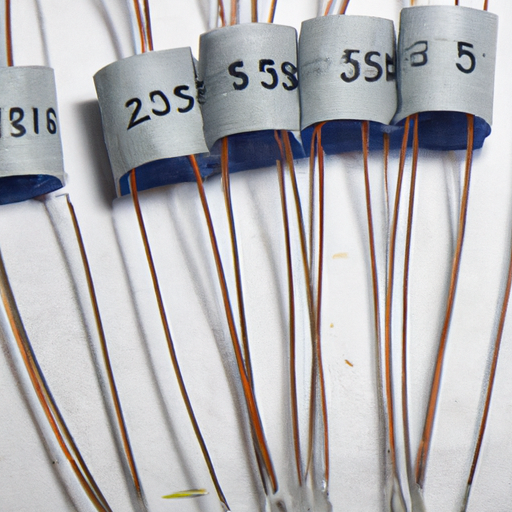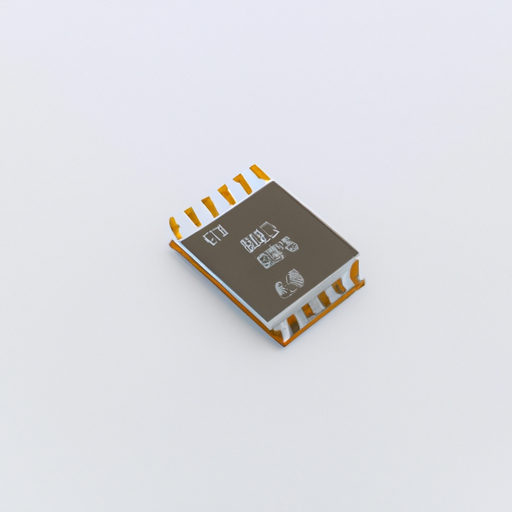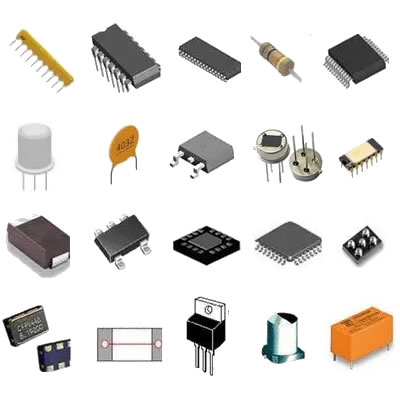What is the market prospect of power wirewound resistors?
What is the Market Prospect of Power Wirewound Resistors?
I. Introduction
A. Definition of Power Wirewound Resistors
Power wirewound resistors are passive electronic components that utilize a wire wound around a core to create resistance. These resistors are designed to handle high power levels, making them essential in various applications where heat dissipation and stability are critical. Unlike standard resistors, wirewound resistors can maintain their performance under high-stress conditions, which is why they are favored in many industrial and commercial applications.
B. Importance in Electronic Circuits
In electronic circuits, resistors play a vital role in controlling current flow, dividing voltages, and protecting sensitive components. Power wirewound resistors, in particular, are crucial in applications that require precise resistance values and the ability to withstand high temperatures. Their reliability and performance make them indispensable in power electronics, automotive systems, and renewable energy technologies.
C. Overview of Market Trends
The market for power wirewound resistors is experiencing significant growth, driven by advancements in technology and increasing demand for high-power applications. As industries evolve and new technologies emerge, the need for reliable and efficient resistors continues to rise. This blog post will explore the historical context, types, applications, market drivers, challenges, regional analysis, and future trends of power wirewound resistors.
II. Historical Context
A. Evolution of Resistor Technology
The history of resistors dates back to the early days of electrical engineering. Initially, resistors were made from carbon and other materials, but as technology advanced, the need for more robust and reliable components led to the development of wirewound resistors. These resistors offered improved performance, stability, and heat dissipation compared to their predecessors.
B. Development of Wirewound Resistors
Wirewound resistors emerged in the mid-20th century as engineers sought solutions for high-power applications. By winding a resistive wire around a ceramic or metal core, manufacturers could create resistors that could handle higher currents and dissipate heat more effectively. This innovation marked a significant milestone in resistor technology, paving the way for their widespread adoption in various industries.
C. Key Milestones in the Industry
Over the years, the wirewound resistor industry has seen several key milestones, including the introduction of precision wirewound resistors for applications requiring high accuracy and stability. The development of high-power wirewound resistors has also enabled their use in demanding environments, such as industrial machinery and automotive systems.
III. Types of Power Wirewound Resistors
A. Standard Wirewound Resistors
Standard wirewound resistors are designed for general-purpose applications. They offer good performance and reliability, making them suitable for a wide range of electronic circuits.
B. Precision Wirewound Resistors
Precision wirewound resistors are engineered for applications that require high accuracy and low tolerance. These resistors are often used in measurement and calibration equipment, where precise resistance values are critical.
C. High-Power Wirewound Resistors
High-power wirewound resistors are designed to handle significant power levels, making them ideal for applications in power electronics and industrial machinery. Their robust construction allows them to dissipate heat effectively, ensuring reliable performance under demanding conditions.
D. Specialty Wirewound Resistors
Specialty wirewound resistors are tailored for specific applications, such as high-temperature environments or unique circuit requirements. These resistors may incorporate advanced materials or designs to meet the needs of specialized industries.
IV. Applications of Power Wirewound Resistors
A. Industrial Applications
1. Power Electronics
Power wirewound resistors are widely used in power electronics, where they help manage current flow and voltage levels in devices such as inverters, converters, and power supplies. Their ability to handle high power levels makes them essential in these applications.
2. Motor Drives
In motor drive systems, wirewound resistors are used for braking and load testing. They provide the necessary resistance to control motor speed and torque, ensuring efficient operation in industrial machinery.
B. Consumer Electronics
1. Audio Equipment
In audio equipment, power wirewound resistors are used to manage signal levels and prevent distortion. Their stability and reliability contribute to high-quality sound reproduction in amplifiers and speakers.
2. Home Appliances
Many home appliances, such as washing machines and microwaves, utilize power wirewound resistors for various functions, including heating elements and motor control. Their durability ensures long-lasting performance in everyday devices.
C. Automotive Applications
In the automotive industry, power wirewound resistors are used in various systems, including braking, power steering, and engine control units. Their ability to withstand harsh conditions and provide reliable performance is crucial for modern vehicles.
D. Renewable Energy Systems
As the world shifts towards renewable energy, power wirewound resistors play a vital role in solar inverters and wind turbine systems. They help manage power conversion and ensure efficient energy distribution in these sustainable technologies.
V. Market Drivers
A. Growing Demand for High-Power Applications
The increasing demand for high-power applications across various industries is a significant driver for the power wirewound resistor market. As technology advances, the need for components that can handle higher power levels continues to grow.
B. Advancements in Technology
Technological advancements in electronics and materials science have led to the development of more efficient and reliable power wirewound resistors. These innovations are driving market growth as manufacturers seek to improve performance and reduce costs.
C. Increasing Adoption of Electric Vehicles
The rise of electric vehicles (EVs) is creating new opportunities for power wirewound resistors. As the automotive industry transitions to electric powertrains, the demand for reliable components that can handle high currents and voltages is on the rise.
D. Rise in Renewable Energy Projects
The global push for renewable energy sources is driving the demand for power wirewound resistors in solar and wind energy systems. As more projects are initiated, the need for efficient and reliable components will continue to grow.
VI. Market Challenges
A. Competition from Alternative Resistor Technologies
The power wirewound resistor market faces competition from alternative resistor technologies, such as thick film and thin film resistors. These alternatives may offer advantages in certain applications, posing a challenge for wirewound resistors.
B. Supply Chain Issues
Supply chain disruptions, particularly in the wake of global events, can impact the availability of raw materials needed for manufacturing power wirewound resistors. This can lead to increased costs and delays in production.
C. Regulatory Compliance and Standards
As industries become more regulated, manufacturers of power wirewound resistors must ensure compliance with various standards and regulations. This can add complexity to the production process and increase costs.
D. Price Fluctuations of Raw Materials
The prices of raw materials used in the production of power wirewound resistors can fluctuate significantly, impacting manufacturing costs. Manufacturers must navigate these fluctuations to maintain profitability.
VII. Regional Market Analysis
A. North America
The North American market for power wirewound resistors is driven by advancements in technology and the growing demand for electric vehicles. The region is home to several key manufacturers and a robust automotive industry.
B. Europe
Europe is witnessing significant growth in the power wirewound resistor market, fueled by the rise of renewable energy projects and stringent regulations on emissions. The region's focus on sustainability is driving demand for efficient components.
C. Asia-Pacific
The Asia-Pacific region is expected to see the highest growth in the power wirewound resistor market, driven by rapid industrialization and increasing demand for consumer electronics. Countries like China and India are emerging as key players in the market.
D. Latin America
In Latin America, the market for power wirewound resistors is growing, particularly in the automotive and renewable energy sectors. As infrastructure develops, the demand for reliable electronic components is expected to rise.
E. Middle East and Africa
The Middle East and Africa are witnessing growth in the power wirewound resistor market, driven by investments in renewable energy and industrial projects. The region's focus on diversifying its energy sources is creating opportunities for manufacturers.
VIII. Future Trends and Innovations
A. Miniaturization of Components
As electronic devices become smaller and more compact, the trend towards miniaturization is influencing the design of power wirewound resistors. Manufacturers are developing smaller, more efficient components to meet the demands of modern electronics.
B. Smart Resistor Technologies
The integration of smart technologies into resistors is an emerging trend. Smart wirewound resistors can provide real-time data on performance and temperature, allowing for better monitoring and control in electronic systems.
C. Integration with IoT Devices
The rise of the Internet of Things (IoT) is creating new opportunities for power wirewound resistors. As more devices become interconnected, the need for reliable and efficient components will continue to grow.
D. Sustainability and Eco-Friendly Practices
Sustainability is becoming a key focus for manufacturers of power wirewound resistors. Companies are exploring eco-friendly materials and production processes to reduce their environmental impact and meet consumer demand for sustainable products.
IX. Conclusion
A. Summary of Market Prospects
The market prospects for power wirewound resistors are promising, driven by advancements in technology, increasing demand for high-power applications, and the rise of electric vehicles and renewable energy projects. Despite challenges such as competition and supply chain issues, the future looks bright for this essential component.
B. Final Thoughts on the Future of Power Wirewound Resistors
As industries continue to evolve and new technologies emerge, power wirewound resistors will play a crucial role in ensuring the reliability and efficiency of electronic systems. Manufacturers must stay ahead of trends and innovations to remain competitive in this dynamic market.
C. Call to Action for Industry Stakeholders
Industry stakeholders, including manufacturers, engineers, and researchers, should collaborate to drive innovation and address challenges in the power wirewound resistor market. By working together, they can ensure the continued growth and success of this vital component in the electronics industry.
X. References
A. Academic Journals
- Journal of Electronic Materials
- IEEE Transactions on Components, Packaging and Manufacturing Technology
B. Industry Reports
- Market Research Future: Power Wirewound Resistors Market Report
- Grand View Research: Resistor Market Analysis
C. Market Research Studies
- Research and Markets: Global Wirewound Resistors Market Report
- Technavio: Wirewound Resistors Market Analysis
D. Manufacturer Publications
- Vishay Intertechnology: Wirewound Resistors Product Catalog
- Ohmite Manufacturing: Power Wirewound Resistors Overview
---
This blog post provides a comprehensive overview of the market prospects for power wirewound resistors, highlighting their importance, applications, and future trends. By understanding the dynamics of this market, stakeholders can make informed decisions and contribute to the continued growth of this essential component in the electronics industry.







